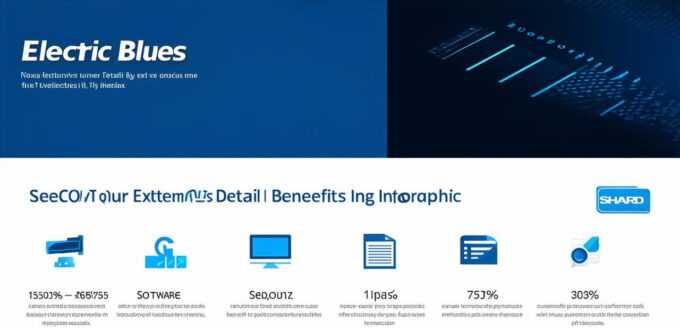Software is an integral part of our daily lives, from the applications we use on our smartphones to the systems that power our workplaces and businesses. But why exactly is software so important? In this article, we will explore the many benefits of software and how it has transformed the way we live and work.
The Importance of Software in Our Daily Lives
Software has become an essential part of our daily lives in recent years. From social media to e-commerce, mobile apps to productivity tools, there is no aspect of modern life that is not touched by software in some way or another.

1. Increased Efficiency and Productivity
One of the main benefits of software is its ability to increase efficiency and productivity in various industries. For example, project management software allows teams to plan, organize, and track tasks more effectively, leading to faster completion times and higher-quality work.
2. Enhanced Communication and Collaboration
Software has also revolutionized the way we communicate and collaborate with others. With tools like video conferencing, instant messaging, and document sharing, teams can work together seamlessly regardless of their location.
3. Improved Customer Experience
Another way software has transformed our daily lives is by improving the customer experience. With e-commerce platforms, customers can shop from anywhere at any time, with just a few clicks. Online banking apps allow us to manage our finances on the go, while social media provides a platform for businesses to engage with their customers and provide personalized experiences.
4. Increased Accessibility and Inclusivity
Finally, software has made many aspects of our lives more accessible and inclusive. For example, assistive technology like screen readers and speech recognition tools have enabled people with disabilities to access information and participate in activities that were previously impossible. Similarly, language translation software has made it easier for people who speak different languages to communicate and understand each other.
The Evolution of Software: From Mainframe to Mobile
The evolution of software is a fascinating journey that has seen it transition from mainframe computers to mobile devices. Here are some key milestones in the history of software:
1. Mainframe Computers
In the 1950s and 1960s, mainframe computers were the most advanced form of computing technology available. These massive machines were used by governments and large corporations to process data and run complex calculations. Software was initially developed specifically for these machines, with each program written in machine code that could only be executed on the specific hardware it was designed for.
2. Personal Computers
In the 1970s and 1980s, personal computers like the Apple II and Commodore 64 became more popular, leading to the development of software specifically designed for these machines. This software was typically written in higher-level programming languages that could be executed on multiple platforms, making it easier to transfer code between different machines.
3. The Internet and World Wide Web
The development of the internet and the World Wide Web in the 1990s saw a shift towards web-based software that could be accessed from any device with an internet connection. This led to the rise of e-commerce platforms, social media, and other online applications that have become so ubiquitous today.
4. Mobile Devices
In recent years, mobile devices like smartphones and tablets have become increasingly popular, leading to the development of software specifically designed for these smaller screens. This has led to a shift towards mobile-first design, where developers prioritize creating apps that are optimized for touchscreens over desktop computers.
The Future of Software: Predictions and Trends
As technology continues to evolve, so too will software. Here are some predictions and trends to watch out for in the future:
1. Artificial Intelligence and Machine Learning
Artificial intelligence (AI) and machine learning (ML) are set to become even more prevalent in the software world. These technologies enable computers to learn from data and make decisions based on that learning, leading to more intelligent and personalized software experiences.
2. Internet of Things (IoT)
The Internet of Things is a network of interconnected devices that can communicate with each other and share information. As this technology continues to develop, we will see more software designed to work seamlessly across different devices and systems, allowing us to control our homes and businesses from anywhere at any time.
3. Augmented Reality and Virtual Reality
Augmented reality (AR) and virtual reality (VR) are set to become major players in the software world, enabling users to immerse themselves in digital environments and interact with virtual objects in new and exciting ways.
4. Cybersecurity
As technology becomes more integrated into our daily lives, cybersecurity will become increasingly important. Software developers will need to prioritize security from the outset, building in protections against hacking, data breaches, and other threats.
Conclusion: The Power of Software is Unmatched
In conclusion, software has transformed many aspects of our daily lives, enabling us to work more efficiently, communicate more effectively, and access information more easily than ever before. As technology continues to evolve, so too will software, leading to even more exciting and innovative applications in the future. Whether you are a software developer, business owner, or simply a user of technology, there is no denying the power of software and its ability to shape our world for the better.
